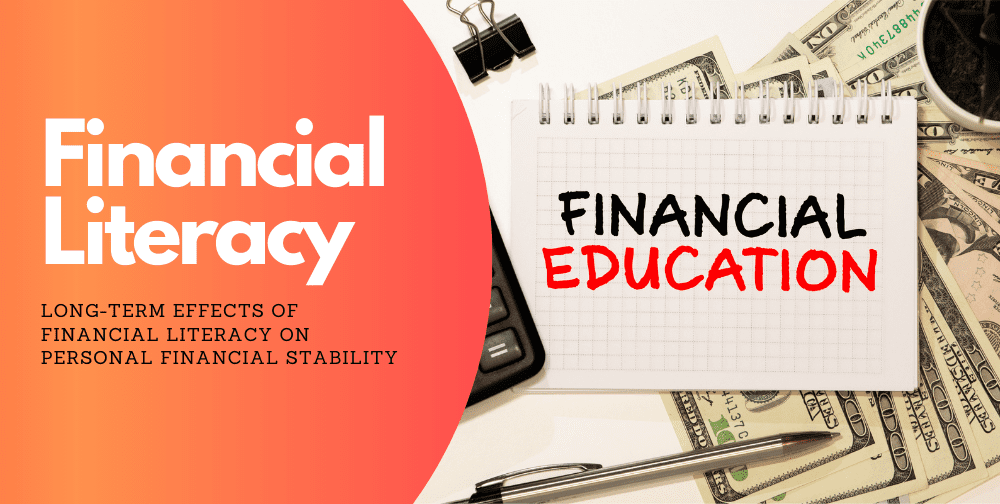Long-term Effects of Financial Literacy on Personal Financial Stability

Data underscores pervasive anxiety about financial matters among U.S. adults, with a 2022 FINRA study showing that 56% experience stress when considering their finances. This stress is more acute among the younger demographic aged 18 to 34, where 69% report substantial financial stress. Despite these concerns, a surprising 74% of Americans claim they follow a budget, though 16% admit they often exceed this budget. The reality of financial literacy is reflected starkly in emergency fund statistics: 22% of U.S. adults lack any form of emergency fund, and 30% do not have the savings to cover three months of expenses, illustrating a gap between financial intentions and practical financial resilience.
The precarious nature of financial security is further highlighted by the 61% of Americans living paycheck to paycheck, as reported by LendingClub in 2023. This number not only signals a widespread vulnerability to financial shocks but also challenges the effectiveness of current financial planning and literacy efforts.
Education and Misconceptions
Financial education reveals disparities and challenges. Despite 35 states receiving poor grades for their financial literacy education efforts in high schools, the impact of this education on those who do receive it is notable. College students with access to financial literacy courses demonstrate better financial behaviors, such as effective budgeting and credit management, which are essential skills given that financial challenges are a leading cause for college dropout rates.
Yet, gaps in foundational financial knowledge persist across age groups. A concerning 52% of youths aged 15-18 failed a basic financial literacy quiz, pointing to a critical need for enhanced educational frameworks. Additionally, many adults harbor misconceptions about credit scores; a survey by Credit Karma in 2023 revealed that while half of the respondents believed they understood credit scores well, their actual knowledge did not align with this confidence, as evidenced by an average score of just over 60% on related questions.
Even financially problematic behavior, such as uninformed igaming, is deemed highly risky in comparison to an informed user using a Playusa tax calculator, for instance. This highlights the broader issue of inadequate financial knowledge and the potential costs associated with such gaps.
Financial Practices and Long-term Implications
On a more positive note, financial literacy has a palpable impact on long-term financial behaviors. Adults with higher financial literacy are more likely to engage in beneficial practices such as spending within their means and saving for emergencies. Specifically, the FINRA Foundation found a considerable difference in behavior between those with higher financial literacy (53% spend less than their income and 65% have emergency funds) compared to those with lower literacy levels.
The disparity extends to retirement planning, where lower financial literacy correlates with less preparation and lower asset accumulation. This is especially critical as studies link higher literacy to more prudent decisions, such as avoiding high-cost credit options and engaging in saving and investing, which are key to economic stability and participation.
Moreover, cultural influences shape financial behaviors, suggesting that literacy programs need to consider diverse backgrounds to enhance their efficacy. For example, regional and cultural differences impact financial socialization and, consequently, financial decisions and literacy levels.
Strategies for Improving Financial Education Effectiveness
The effectiveness of financial education is not uniform, as evidenced by mixed results across various implementations. A closer examination of methodologies that have yielded positive outcomes reveals a trend toward more practical and engaging educational techniques. For instance, interactive learning tools such as financial literacy games and simulations have demonstrated success in not only engaging students but also in enhancing their understanding of complex financial concepts. These tools provide a dynamic learning environment that can make abstract concepts tangible, particularly effective in schools like San Marcos High School and Mission Hills High School, where such classes have transitioned from elective to full-time commitments.
Further, the timing and integration of financial education play critical roles. For example, introducing financial literacy at essential life stages, such as before entering college or starting a first job, can greatly impact future financial decisions. Tailoring education to fit the immediate needs of the learners, such as focusing on budgeting, saving, and understanding credit for young adults, enhances the relevance and retention of the information. This approach helps bridge the gap between theoretical knowledge and practical application, which is essential for fostering lasting financial habits.
Addressing Financial Literacy Gaps Through Policy and Community Engagement
There is a compelling case for increased policy intervention to address the financial literacy gaps evident across the United States. With 35 states receiving grades of C, D, or F for their financial literacy education, there is a clear indication that many high school students are graduating without the necessary financial knowledge. Policy measures could mandate a standardized financial literacy curriculum that includes practical life skills such as understanding taxes, mortgage, and debt management, which are necessary for adult financial stability.
Community engagement also plays a vital role in enhancing financial literacy. Local financial institutions, non-profits, and community centers can offer workshops and seminars that cater to specific community needs. For instance, programs targeted at older adults might focus on retirement planning and estate management, while those for younger participants might concentrate on effective ways to manage student loans and initial career finances.
These community-based programs can also provide mentorship opportunities, connecting individuals with financial professionals who can offer guidance tailored to their personal financial situations. Such direct interaction not only helps in clarifying doubts but also empowers individuals with the confidence to make informed financial decisions, thereby improving their overall financial literacy and resilience.





